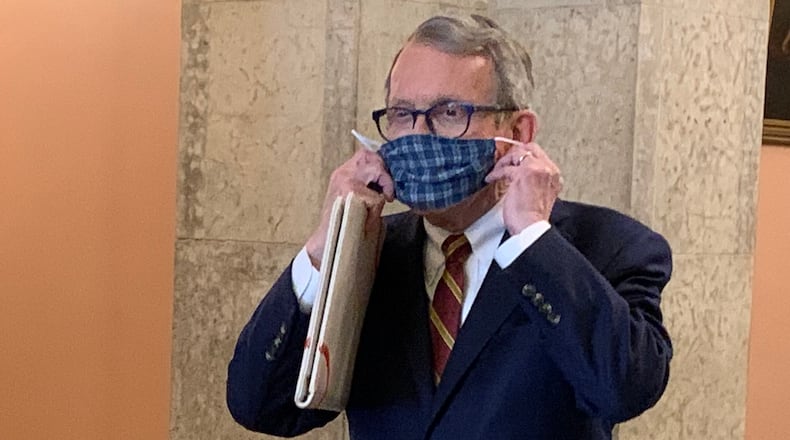The first week Ohio is expecting to receive 98,000 Pfizer vaccines. The next week the state will start receiving the Moderna vaccine as well, with the federal government continuing to ship out batches each week.
The state plans to report the number of vaccines distributed, the governor said. He is scheduled to speak at 2 p.m. Friday.
DeWine toured an Ohio Department of Health warehouse on Tuesday that will be central to the vaccine’s distribution. In November, he announced that Ohio could receive its first shipment of the vaccine as soon as Dec. 15.
Ohio has not yet seen an impact from Thanksgiving travel and gatherings in its coronavirus data, said Dr. Andy Thomas of the Ohio State University Wexner Medical Center.
“This is not the beginning of the end,” he said. “This is not even the end of the beginning.”
Most coronavirus patients develop symptoms three to 10 days after they are exposed to the virus, Thomas said. From the onset of symptoms it could take seven to 10 days before a patient is hospitalized and then about a week before they need to be placed on a ventilator, he said. One or two weeks after a patient is placed on the ventilator is when hospitals are seeing patients die.
Due to surges in hospitalizations, Ohio hospitals are starting to delay non-emergency procedures and care, Thomas said.
“We’re in a really difficult spot here, and we’re just now heading into the most challenging three months of this pandemic,” he said. “ICU beds are the area of capacity where we have the biggest strain across the state - especially in rural areas.”
One in three ICU patients have coronavirus, Thomas said. Many hospital workers are concerned that if ICU admission rates continue to increase, it will push out non-COVID patients.
“The hardest area for hospitals to increase their capacity or increase their number of beds is in the intensive care unit,” Thomas said. “You need very specialized staff, specially trained nurses and doctors.”
If a hospital hits their limit on ICU beds, patients will have to be transferred out of the community.
Nora Colburn of OSU Wexner Medical Center said that COVID-19 patients are overwhelming hospitals, pushing out non-coronavirus patients.
“The bottom line is non-COVID patients are being crowded out of the system and won’t be able to get the care they need to stay healthy,” she said. “We all must do our part to stop the spread of the virus.”
Colburn urged people to wear a mask whenever with those outside of their household.
On Wednesday, Ohio’s seven-day positivity rate passed 15%, placing the state on its own travel advisory. It’s the first time since April the state’s positivity rate surpassed 15%.
“It’s really bad news,” said Dr. Bruce Vanderhoff, ODH chief medical officer. “Rising above 15% in being in a tornado. Ohio is in a tornado.”
While the increasing positivity rate is a cause to worry, it is not cause to despair, he said.
“Together I know we can slow this down,” Vanderhoff said.
As of Thursday, there have been 446,849 total cases of coronavirus reported in Ohio, according to ODH. The state is reporting an average of 8,209 cases a day.
The governor said that while he’s hearing mask compliance is improving and that public health orders including the curfew are helping, cases are still increasing, just at a slower rate.
DeWine released the state’s updated public health advisory map, with Montgomery County remaining purple and the rest of the Miami Valley staying red.
Last week, Warren County made the level 4 watch list, but did not qualify to move up to purple this week.
About the Author
